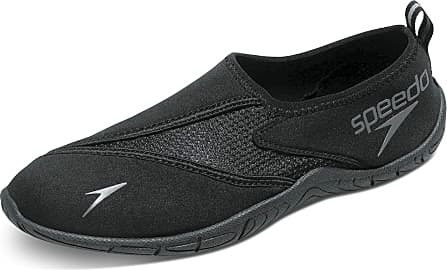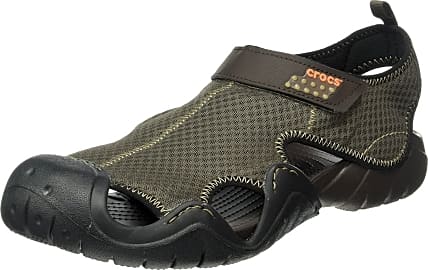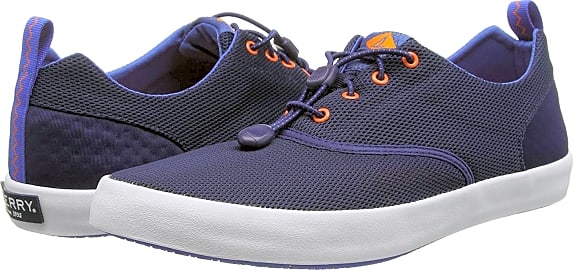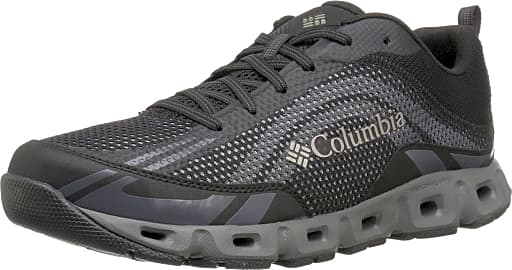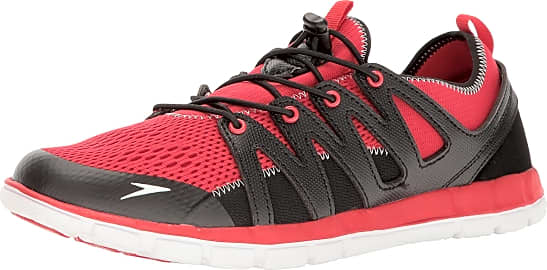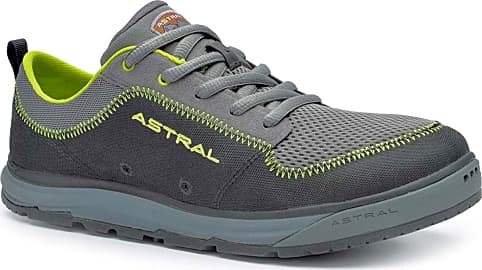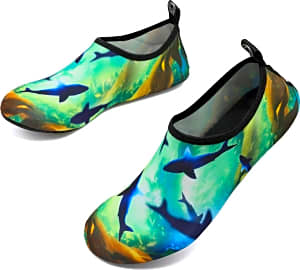The 10 Best Men's Water Shoes

This wiki has been updated 47 times since it was first published in April of 2015. Enjoy aquatic adventures of any kind while protecting your feet in style and comfort with a pair of these men's water shoes. Our comprehensive selection includes models designed for boating and/or kayaking, hiking over slippery boulders, paddling through shell-encrusted oceans, diving over rocky seabeds, or just taking a stroll along a wet beach. Most will also work as shower shoes in pinch. When users buy our independently chosen editorial selections, we may earn commissions to help fund the Wiki.
Editor's Notes
June 05, 2019:
Wet sneakers are the worst, which is why you'll want a solid pair of water shoes for your aquatic ramblings, whether that's at the beach, pool, lake, or river. Currently, the Chaco Outcross Evo 2 and Merrell All Out Blaze Aero Sport are still top-notch selections that cover activities at such locations, from kayaking to exploring and beyond. They both have a casual yet rugged appearance that is sporty but not over the top, so they'll work for a range of style sensibilities. We have to admit, though, that neither is all that cheap. You can give the Speedo Surfwalker Pro 3.0 or Vifuur Quick-Dry a try if you need something a little more wallet-friendly, but note that these aren't made to be as rugged. You probably won't wear them to scramble over sharp rocks, for instance, but for chillin' by the water, they'll do the trick. The Crocs Swiftwater Sandal might be another alternative to consider; a lot of people hate the brand for a whole constellation of reasons, but this particular iteration is neither too expensive nor overly eye-catching.
Special Honors
L.L.Bean NRS Kicker Remix Cold water is no problem for the L.L.Bean NRS Kicker Remix, water shoes that feature both neoprene and titanium for a blend of durability and warmth. They offer traction, too, but be sure to order a half size up for the best fit. llbean.com
Vibram FiveFingers V-Aqua Not everyone will want a pair of the Vibram FiveFingers V-Aqua, since their interesting design is bound to draw a few looks. But many swear that these offer a better connection with the ground, and that they provide a grip that's hard to beat, no matter the conditions. vibram.com
Canvassing For A Better Shoe
In the shot, you can clearly see the shoes both men are wearing: Converse and Keds, respectively, made of canvas and leather.
For a long time, canvas and leather were the go-to materials for footwear on or around water. It wasn't so much about keeping your feet dry and breathable as it was about giving you a little grip and protection from a shoe that wouldn't be destroyed by water's unique power to ruin everything.
There's an interesting shot in "Jaws" that stayed with me from the first time I saw it. It's a shot along the side of the boat, right around the middle of the film, when both Brodie and Hooper are clambering all over the ship in pursuit of the shark. In the shot, you can clearly see the shoes both men are wearing: Converse and Keds, respectively, made of canvas and leather.
Modern water shoes are made of a combination of those traditional materials and a slew of fancy synthetics that shed and evaporate water at a much greater clip. Some are designed for rougher applications than others, like kayaking or light spelunking. Others have simpler applications in mind like walking along the shores of a lake or ocean, or floating peacefully in either of the same.
Whatever the specific application, water shoes are designed with larger holes through which water can drain, and many smaller holes for the circulation of air and the evaporation of water in the shoe. A good water shoe will dry itself rather quickly and can withstand long periods of submersion.
Your Gut Knows What Your Feet Need
The thought of taking one's shirt off in public can be a terrifying one. Admittedly, there was a time when I was that chubby kid who kept his shirt on, even in the pool. I wasn't even that big, but the psychological pressure to live up to certain beauty standards, even for men, is supremely heavy.
Whether or not you're in particularly good shape, there are things you can do to make sure you look good in and around the water all season. Trekking around in the right pair of water shoes is a good start.
Whether or not you're in particularly good shape, there are things you can do to make sure you look good in and around the water all season.
Whatever the features of a given pair of water shoes, they're useless to you if you won't wear them where anyone can see, unless you own your own private slice of beach and only ever swim alone like some modern summertime Charles Foster Kane.
Of course, features are important, and understanding your need for a pair of water shoes will be your first step in selecting among all these great pairs. If you're out in the wet wilderness, hiking through well-maintained trails that cross some streams and creeks, you'll do best with a pair of water shoes that most resemble hiking shoes. Upon first glance, you might even mistake these for low-cut hiking shoes, especially with their clearly accentuated arch support. But with closer inspection, you'll see that they are built for drainage and evaporation.
Water shoes for lighter use look more like weird, webbed socks or thin toe shoes. If you're swimming in an area with a lot of coral or zebra muscles or anything that could be dangerous–swimming anywhere near the Jersey Shore, for example–these light water shoes will keep your feet protected without weighing you down.
All that said, style is the final variable on which you must stake your decision. If you're torn between the water shoes at numbers one and seven, but the pair at number seven gives you those sweet consumerist butterflies we all know so well, follow your gut and your feet will thank you.
Wingtips Were Once Aquatic
You've no doubt seen the gaudy black-and-white shoes with the strange pattern of holes in them worn by swing dancers and sporters of Zoot suits stuck in the 1940s. These contrasting shoes are later manifestations of the wingtip shoe, originally called the brogue.
The brogue has had a resurgence in menswear over the last decade or so (albeit in a less gaudy monotone presentation), and it's interesting to note how a piece of modern formal wear got its roots among the Irish poor.
Irish farmers constructed leg coverings of untanned hide into which they'd punch a series of holes.
You see, brogues were the first water shoes, dating back at least to the 16th century. Irish farmers constructed leg coverings of untanned hide into which they'd punch a series of holes. One can assume these holes were far less decorative than those found on modern brogues, and that they also did a much better job draining off bog water than their modern equivalents might.
In the absence of traditional brogues, people who wanted to spend time around water and still protect their feet turned to other, more basic constructions of leather and canvas, like the Converse and Keds mentioned earlier. In the past few decades, though, water shoes designed from synthetic, water-resistant materials made a big splash in the market.
An early manifestation of this new style of water shoe was the Aquashoe. This was a small, inexpensive slip-on water shoe sold in discount stores across the land. I lived in Aquashoes for a few summers, their distinct, ankle high tan-line my badge of aquatic honor.
Customers keen on what these shoes offered demanded something a little more rugged, however, and soon companies began to manufacture the kind of shoes we're evaluating for you today.



